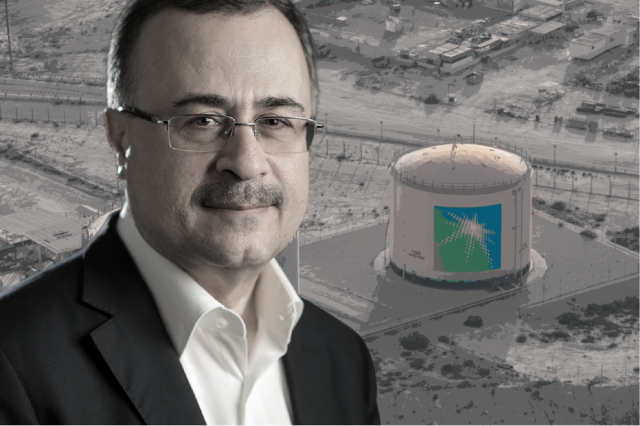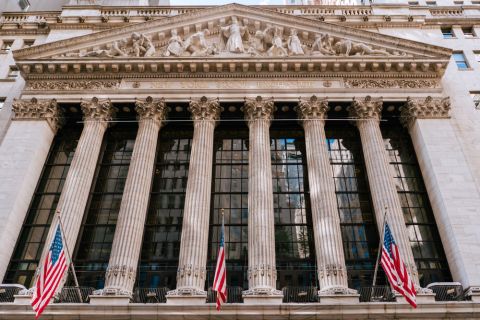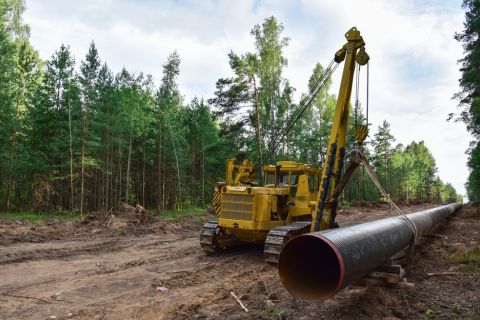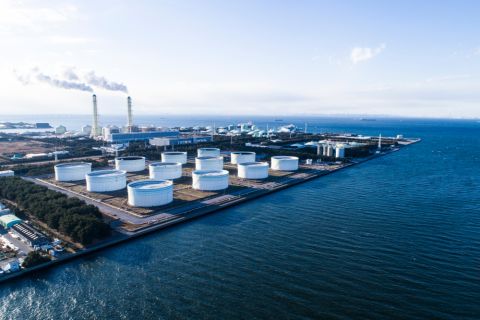
Amin Nasser, Saudi Aramco’s CEO, has pledged to pay the state oil company’s $75 billion dividend despite reporting a 73% drop in quarterly earnings. (Source: Saudi Aramco)
Saudi Aramco executives began 2020 in a celebratory mood after pulling off the world’s largest stock market listing. But it has rapidly become the state-controlled oil company’s toughest year in decades, hit by the twin shocks of coronavirus and a slump in crude prices.
“Aramco has successfully navigated many challenges in its 87-year history…But this current crisis that has caused the worst economic downturn since the great depression of the 1930s is by far the toughest challenge the world has ever faced,” CEO Amin Nasser said after reporting a 73% drop in quarterly earnings.
The results were better than its international peers, many of which have suffered multibillion-dollar losses as the pandemic triggered a fall in oil demand and forced companies to write down assets. But such a dramatic collapse in Saudi Aramco’s earnings would have been unthinkable when it launched its long-awaited share sale in December.
Now it is being forced to recalibrate its capital spending plans, cut costs and scale back ambitions even as the oil market shows tentative signs of recovery.
RELATED:
Saudi Aramco Moves Forward with Plan to Boost Oil Output Capacity, CEO Says
For the first time, it is taking on significant amounts of debt to pay for its $69 billion acquisition of a majority stake in SABIC, the petrochemicals company, from the kingdom’s Public Investment Fund (PIF). The deal was designed to give a financial boost to the PIF, which is Crown Prince Mohammed bin Salman’s chosen vehicle for driving his economic reforms.
Despite the acute pressure, Nasser has also pledged to pay Saudi Aramco’s $75 billion dividend, most of which goes to the government, its main shareholder. It is also investing in raising oil output capacity to 13 million bbl/d at the request of Riyadh, which dictates production policy, even as the company pulls back on spending elsewhere.
The energy giant that facilitates Saudi Arabia’s oil sales has long been considered the backbone of the kingdom’s economy. The shareholder payout is critical both for the domestic investors who poured money into the IPO for a piece of the country’s crown jewel and the government which is grappling to contain a ballooning fiscal deficit.
Riyadh, which relies on oil sales for about 64% of its revenue, has acknowledged it faces an “extreme crisis.”
Steffen Hertog, an expert on the Gulf political economy at the London School of Economics, said: “Compared to other countries, the fiscal hit for Saudi Arabia because of coronavirus is much greater because of their dependence on the oil sector for income.”
Riyadh has increased its debt ceiling from 30% of gross domestic product to 50%, borrowed more than $20 billion, tripled value added tax and slashed the government’s operating and capital expenditures. The government, which even after the IPO still owns about 98% of Saudi Aramco, saw its fiscal deficit widen to $29 billion in the second quarter, while its oil revenue plummeted by 45% year on year.
Oil prices dropped from $70/bbl in January to $20 in April just as Saudi Aramco’s output swung to a record 12.1 million bbl/d as the kingdom engaged in a price war. Two months later, production fell to 7.5 million bbl/d as Saudi Arabia-led OPEC enacted curbs to bolster the crude price. Brent crude has recovered but only to about $44/bbl.
In the face of financial strain, Saudi Aramco has sought to boost its resilience. It has extended its payment schedule for the Sabic deal over eight years and committed to reducing annual capital spending by a quarter to about $25 billion for 2020. Next year’s will be “significantly lower” than the $40 billion-$45 billion initially anticipated, the company said.
It has also made cost savings of $1 billion by taking additional measures. It is renegotiating with contractors, extending project timelines, suspending drilling in some projects and has cut hundreds of higher-paid foreign staff, people familiar with the matter said. Talks for a stake in the oil refining unit of Mukesh Ambani’s Reliance Industries have also been delayed.
Importantly it is borrowing like never before. Its gearing ratio—a measure of debt to equity—jumped to 20.1%, from minus 4.9% in the previous quarter, which Saudi Aramco attributes to debt it took on to purchase Sabic. This is well over its target of 5%-15%.
Such drastic action comes as Saudi Aramco’s free cash flow of $21.2 billion in the first half of the year was insufficient to cover the promised dividend payments of $37.5 billion for the period.
Neil Beveridge, analyst at Bernstein, said that aside from cutting capital spending Saudi Aramco will have to defer other parts of its growth strategy flagged at the time of the IPO, such as overseas refining ventures and liquefied natural gas investments.
“Given current gearing levels, either oil prices need to continue to rise…or more difficult choices need to be made, which ultimately includes the dividend,” Beveridge said.
There appears to be an expectation in Riyadh—based partly on an assumption that oil prices will rise as coronavirus containment measures ease—that Saudi Aramco pays its full dividend to the government and minority investors, who receive priority payments, through to 2021. A Saudi official said: “They should be able to pay all shareholders this year and next year.”
Nasser said in June that while the company would prefer to pay the dividend using cash it may also issue bonds and take out loans to ensure it meets its commitments. The company has sought to emphasise it also had access to credit facilities that remain undrawn.
Yet the impact of new waves of coronavirus and repeat lockdowns on energy demand is uncertain. Vast oil stockpiles built up from earlier in the year also remain, keeping a ceiling on crude prices.
Biraj Borkhataria at RBC Capital Markets said: “The key question is, how far are you willing to keep pushing the balance sheet to keep paying the dividend in full, if the oil price stays low?”
Recommended Reading
Shipping Traffic Freezes Up in Port Waters After Baltimore Bridge Collapse
2024-03-26 - U.S. port of Baltimore traffic was suspended until further notice following a bridge collapse. At least 13 vessels expected to load coal were anchored near the port at the time of the incident.
What's Affecting Oil Prices This Week? (April 15, 2024)
2024-04-15 - While concerns about the stability of oil supply are increasing, Stratas Advisors does not expect oil supply to be disrupted – unless there is further escalation in the Middle East.
Cheniere, Cheniere Energy Partners Uplisted to NYSE
2024-01-31 - LNG producing companies Cheniere Energy and Cheniere Energy Partners are to begin trading on the New York Stock Exchange on Feb. 5.
Trans Mountain Pipeline Announces Delay for Technical Issues
2024-01-29 - The Canadian company says it is still working for a last listed in-service date by the end of 2Q 2024.
Tellurian Head Counters Rumors, Says Company is Focused on ‘Commercial Matters’
2024-01-29 - LNG development firm Tellurian is disputing rumors that the company is looking to sell following its hire of financial advisory firm Lazard.




